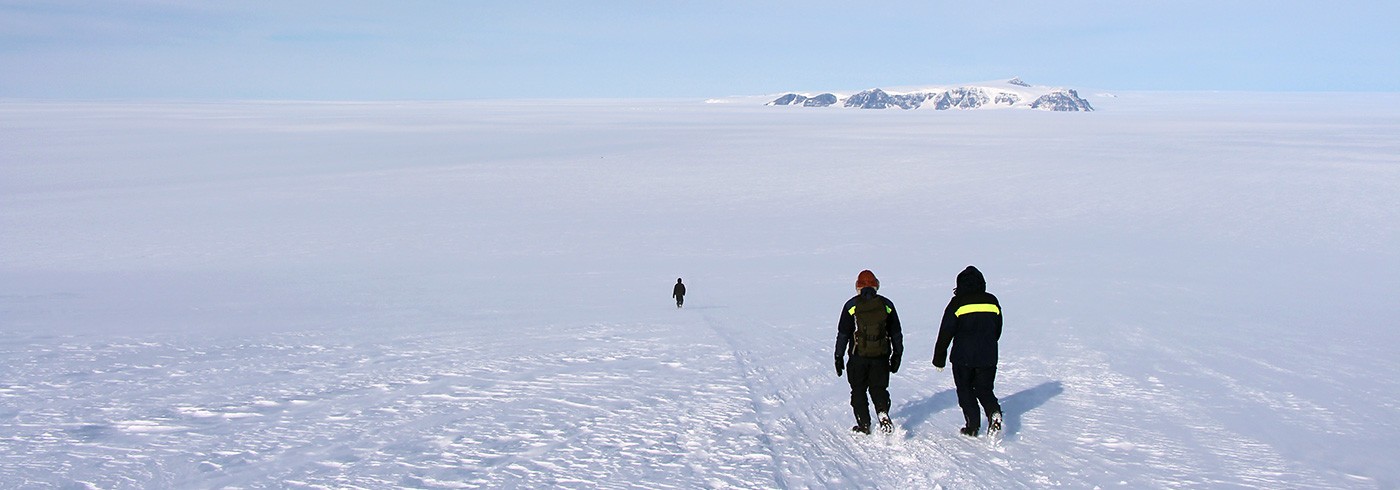
Trying out various kitchens in the contest ”Guess which kitchen boils a liter of water the fastest.” Karin was our judge and Neil won. The combination of two different kitchen was fastest. Photo: Carl Lundberg

A plane with skis is about to land, the mountain in the background is called Plogen. Photo: Carl Lundberg

Ola E during a tour with our snowmobile from Kibergdalen to Wasa with Calle. 260 kilometers in total, and 8 kilometers in poor visibility, something that would have been difficult without GPS. Photo: Carl Lundberg

The same area as in the last picture but this time a satellite image with a resolution of 0.5 meters. The blue line is a previous route up to Kibergdalen. After a look at the new images we chose to establish a new route. The cracks that crosses the trail are up to 50 meters wide. Photo: Carl Lundberg
Last night at dinner we asked our self what technological advances that makes it possible for us to travel to Earth’s most inhospitable and isolated continent? Sure, there have been polar expeditions for over a hundred years now, but you do not need to go too far back in the literature to realise that it was made under completely different risks and sacrifices. Its somewhere around where the images changes from color to black and white so see how the conditions and the changes but must have felt both fear and anxiety. There is more than one story about the expedition That Were left on the ice, not just one, but two long winters more than planned.




